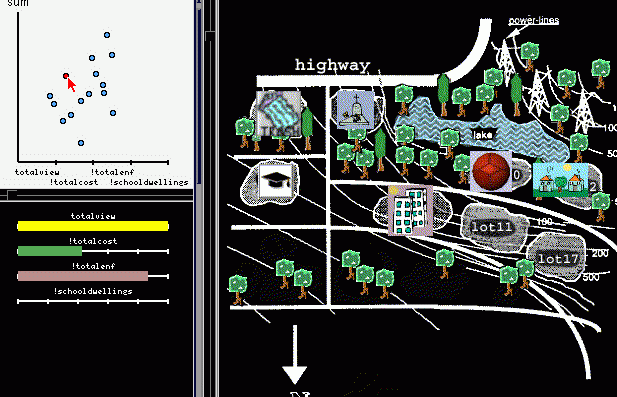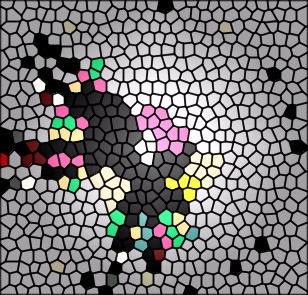COMIND: Computer Aided Creativity and Multicriteria Optimization in Design (1995 - 1999)

COMIND is the system I developped during my PhD thesis... to help designers to increase designers creative skills.
Description
COMIND helps designers search for consistent and optimal configurations of design parameters. This is built as a generic search and decision tool for any types of configuration tasks. Two fundamental processes are studied in this project: over-constrained problem where some preference and criteria must be taken out or relaxed in order for search to generate any solutions; and under-constrained problem where there are too many solutions thus additional criteria must be elicited from users to perform tradeoff analysis. After we introduced some algorithms to resolve conflicts and perform tradeoff analysis, we found that users are still not very motivated to make decisions about preferences and criteria. We then investigated visualization techniques to further enhance the decision context for users to more optimally determine the right criteria to relax, or to choose the solution using human criteria.
Conclusions
Our conclusion was the following:
1. Visualization of tradeoff in solution space – users’ notions of optimal criteria change over time,
depending on the emergence of other criteria, and the characteristics of the solution space itself.
An optimal way to visualize the space is to use 2D scatter plots that allow users to see a solution
in relation to others in different tradeoffs, and to understand the relations implied by the machine.
2. Tradeoff on constraints: when users have to make tradeoffs, for example to solve over-constrained
problems, doing this at the level of constraints is more effective than at the level of individual
solutions. Constraints affect all solutions uniformly and are more efficient than indicating preferences
between the potentially huge number of individual solutions.
3. Coordination of conflict resolution in CSP with tradeoff analysis – when search does not yield
any valid solutions, visualization of the conflict space in the form of lattices (Pu and Lalanne 2002,
Lalanne and Pu 2000) effectively guides users to areas where it is easiest to modify the constraints
responsible for conflicts. For example, a smallest set of conflicting constraints is often easiest to fix.
On the other hand, a visualization of solutions in the tradeoff space can stimulate users to fix those
constraints whose resolution will yield the most satisfactory solutions.
Presentations
1. Interactive Problem Solving via Algorithm Visualization (presented at InfoVis 2000) [PDF];
2. Design Visual Thinking Tools for Mixed-Initiative Systems (presented at IUI 2002) [PDF].
Images
Here are several screenshots of different stages of this project:1. The Kaleidoscope component in COMIND visualizes a generic constraint problem solving process. The image below shows the visualization at different time intervals.


2. When there are too many solutions to choose from (i.e., the problem is under-constrained), the solution space is visualized in a N-dimensional tradeoff space.

3. When a problem is over-constrained, i.e., no solution is currently found, the conflicts of constraints (black squares on the top row) are visualized in a component called Lattice. Constraints participating in the conflicts can be then relaxed.

4. Search space in a more artistic form.
